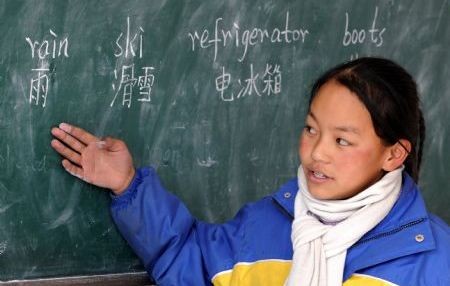Teachers in the small schools of the southwestern Tibet Autonomous Region (TAR), also known as the Xijiang Autonomous Region, are pleased with the technological progress that has taken place in the area since Nov. 2012.
Officially known as "teaching spots," the small schools were at a great disadvantage due to a shortage of teaching staff, but the issue has now been overcome through the introduction of digital resources.
Ma Fujun, the only registered teacher at the Huayagou Primary School in Xinmin Village, explained to the Xinhua publication that "transportation issues" hamper the ability of his rural teaching spot to recruit suitable teachers.
"We can offer all compulsory subjects now. Distance education means our kids can have music, art and English classes, and their Chinese and math levels are advancing thanks to other people's teaching methods," said Ma regarding the introduction of technology in the schools.
Previously, the primary school could not offer the full curriculum of eight subjects to its grade one, two and three students because Ma was unable to realistically manage all three classes. In total, the school provides education to 22 students.
The new digital resources, announced on Sunday, include digital satellite receivers, flatscreen televisions and electronic whiteboards. One of the students told reporters that music is a subject that the students especially like learning on computers.
"We've learned several songs. It's fun," the student said.
After Sunday's announcement, the Chinese government is able to confirm that the 63,600 teaching spots across the country are completely fitted with digital resources.



























